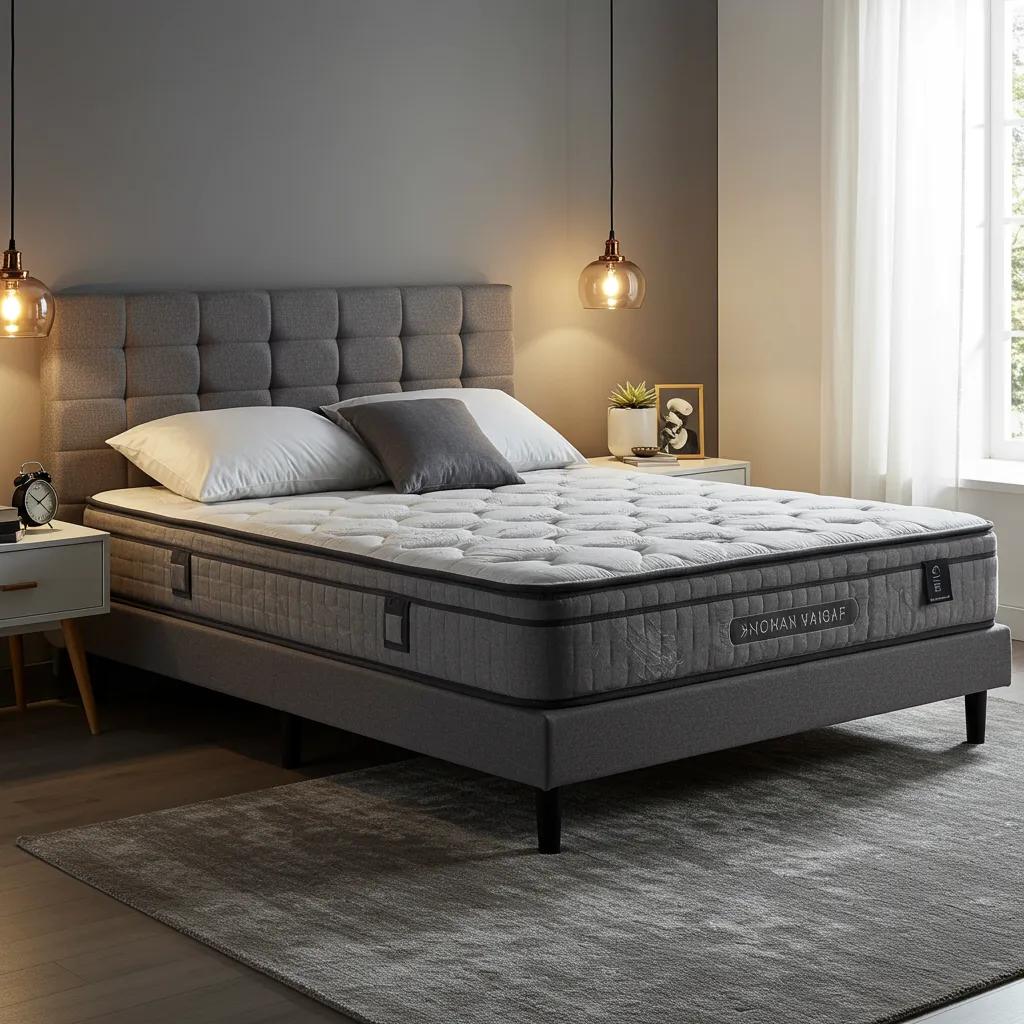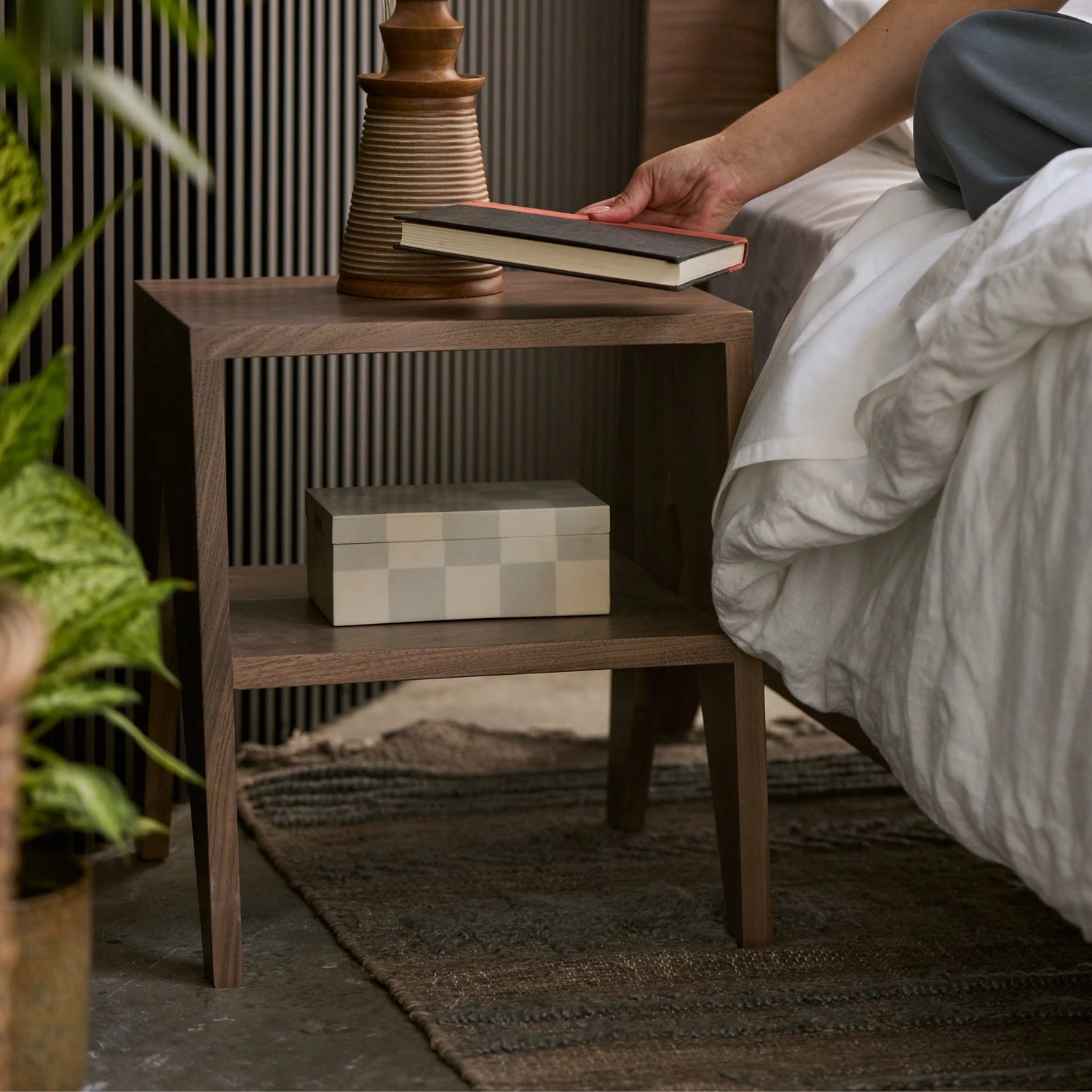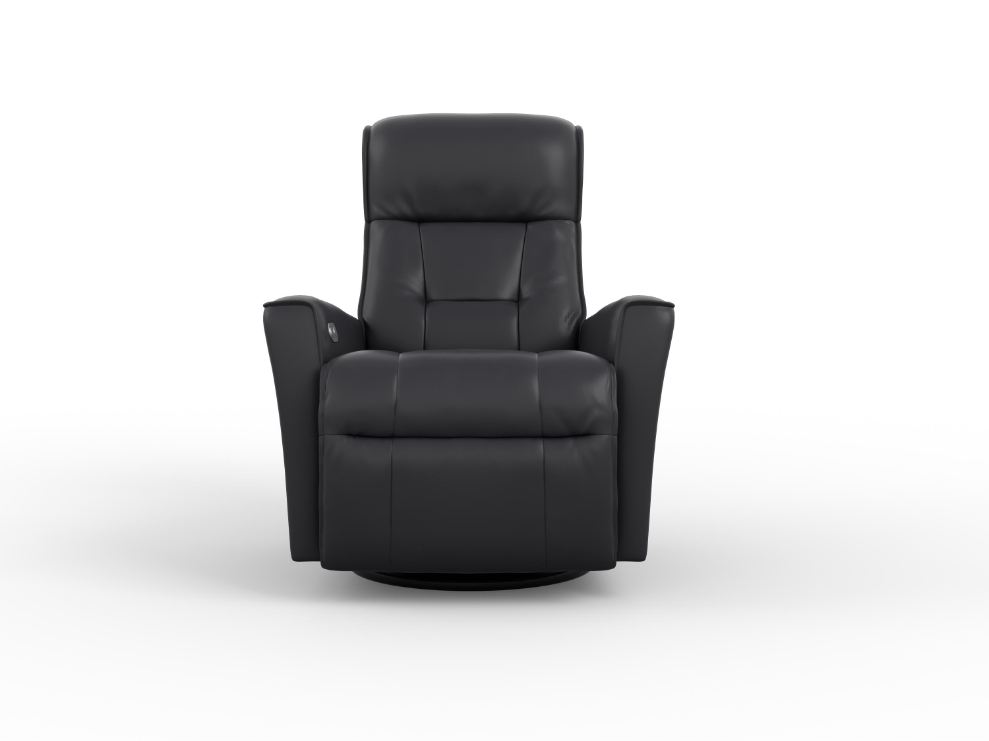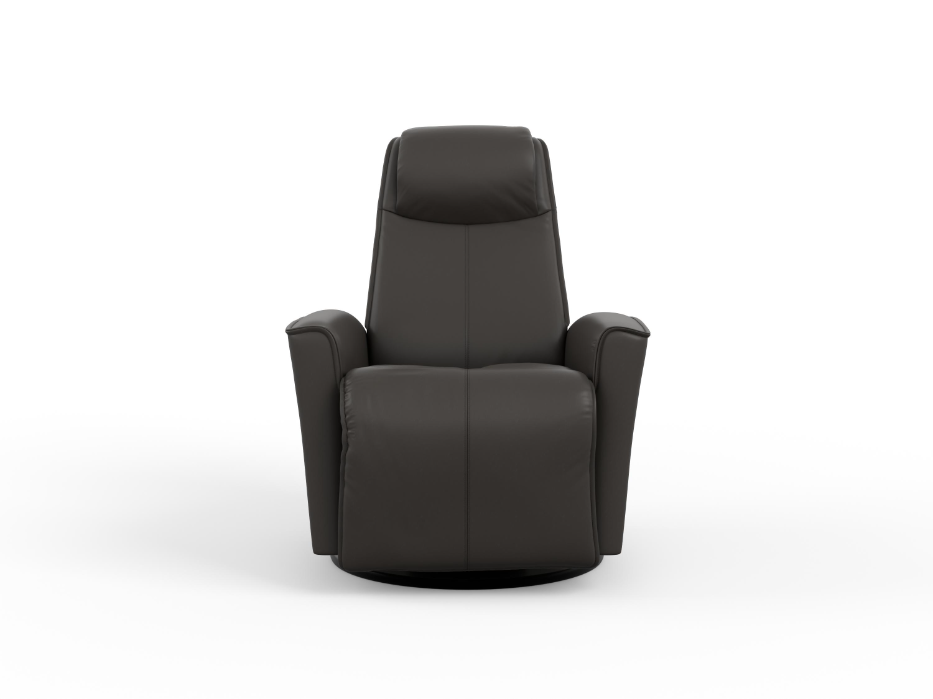Blogs

on Jul 16 2025
Finding a mattress that matches your unique way of snoozing can transform restless nights into restorative rest. I’m Keith, your Mattress Therapist at Sweet Dreams NC, and I’ve helped hundreds of side, back, stomach and combination sleepers find the perfect match. In this guide you’ll discover how your sleep style influences pressure relief and spinal alignment, explore memory foam, hybrid, innerspring, latex and adjustable constructions, zero in on essential features like firmness and cooling, address pain points beyond position, review our buying checklist—with financing and delivery perks—and compare hybrid vs. memory foam before wrapping up with the latest sleep science tips. Let’s dive right in and unlock the secret to your best night’s sleep.
What Is Your Sleep Style and How Does It Affect Mattress Choice?
Your sleep style defines which body parts need support and pressure relief. Side sleepers need gentle contouring for hips and shoulders, back sleepers require firm lumbar support, stomach sleepers demand a sturdy surface to prevent spinal arching, and combination sleepers look for a responsive feel that adapts throughout the night. Recognizing these needs lays the foundation for selecting the ideal mattress material, firmness and feature set that keeps your spine in neutral alignment and alleviates aches.
Sleep Positions and Spinal Alignment
Studies have shown that maintaining proper spinal alignment during sleep is crucial for preventing back pain and ensuring restful sleep. The research emphasizes the importance of choosing a mattress that provides adequate support for the spine in different sleep positions. For instance, back sleepers require a mattress that supports the natural curvature of the spine, while side sleepers need a mattress that contours to the body to relieve pressure points.
Smith, J., "The Impact of Sleep Position on Spinal Health," Journal of Clinical Sleep Medicine (2023)
This research supports the article's discussion on how different sleep positions affect mattress choice and the importance of spinal alignment.
What Mattress Is Best for Side Sleepers to Relieve Hip and Shoulder Pain?
Side sleepers benefit from mattresses that contour gently around the hips and shoulders while keeping the spine aligned. A medium-soft to medium-firm memory foam or hybrid mattress provides the right blend of cradle and support.
Pressure relief arises when foam layers distribute weight evenly across the hip and shoulder ridges.
Contouring memory foam reduces point pressure by conforming to body curves.
A balanced hybrid layer adds bounce and airflow without sacrificing hug.
Sleep Position
Recommended Firmness
Ideal Mattress Type
Side Sleeper
Medium-Soft to Medium-Firm
Memory Foam, Hybrid
A pressure-relieving surface prevents hip discomfort while the responsive support keeps your spine straight, paving the way to the next question of back-sleeper support.
How to Choose a Mattress for Back Sleepers to Support Spinal Alignment?
Back sleepers need a mattress with enough firmness to hold the lumbar curve in place and enough cushioning to relieve shoulder and lower back tension. A medium-firm innerspring or hybrid construction supports natural spinal curves and keeps hips from sinking too deeply.
Look for zoned coils or reinforced foam under the lower back.
Ensure the mattress offers balanced cradle at the shoulders.
Aim for medium-firm to firm comfort levels.
Back sleepers with targeted lumbar support wake up without stiffness, setting the stage for stomach sleeper recommendations.
Which Mattress Firmness and Type Suit Stomach Sleepers for Proper Support?
Stomach sleepers require a firmer surface to prevent the midsection from sinking, which can arch the lower back. A firm innerspring or high-density foam mattress keeps the torso lifted and maintains alignment.
A firm innerspring mattress resists sagging under the abdomen.
High-density foam layers minimize midsection sinkage.
Edge support prevents roll-off when you shift near the perimeter.
By choosing firmness levels designed for stomach positioning, you avoid spinal arching and prepare to explore combination sleeper solutions next.
What Are the Best Mattresses for Combination Sleepers with Varied Needs?
Combination sleepers change positions multiple times, so they need both responsiveness and balanced support. A medium-firm hybrid mattress with adaptive foams and pocketed coils ensures quick rebound and consistent comfort.
Responsive foam layers allow for easy repositioning.
Zoned coil systems adjust support across hips, shoulders and torso.
Medium-firm offers a universal balance between cradle and lift.
Responsive hybrids keep combination sleepers comfortable in every position, guiding us to link sleep style with specific pain points.
How Do Sleep Styles Relate to Common Pain Points Like Back, Hip, and Shoulder Pain?
Each sleep style correlates with distinct pressure zones and potential discomfort. Side sleeping without contouring leads to shoulder pain, back sleeping without lumbar support triggers lower back aches, and stomach sleeping without sufficient firmness causes hip strain. Addressing these pain points with targeted mattress attributes resolves soreness at the source.
Understanding these position pain relationships points us toward examining mattress constructions in more depth.
What Are the Key Mattress Types and Their Benefits for Different Sleep Styles?
Research indicates that the choice of mattress significantly impacts sleep quality, with different mattress types offering varying levels of support and pressure relief. For example, memory foam mattresses are known for their pressure-relieving properties, which can be beneficial for side sleepers, while innerspring mattresses may be more suitable for back and stomach sleepers who need more support.
National Sleep Foundation, "Sleep and Mattress Guide" (2024)
This research supports the article's recommendations on matching mattress types to different sleep styles to improve sleep quality.
Mattresses come in five core constructions—memory foam, hybrid, innerspring, latex and adjustable—each combining materials and comfort levels to match sleep styles and support needs. Knowing their benefits and trade-offs helps you choose the right structure for pressure relief, cooling and durability.
What Are the Advantages and Disadvantages of Memory Foam Mattresses?
Memory foam mattresses contour to body curves, offering excellent motion isolation and pressure relief, but they can retain heat and emit a mild off-gassing odor at first.
Contouring memory foam evenly distributes weight.
Motion isolation lets partners shift without disturbance.
Heat-trapping closed-cell foam can feel warm overnight.
Characteristic
Benefit
Consideration
Contouring Foam
Pressure relief for shoulders and hips
Heat retention potential
Motion Isolation
Undisturbed sleep for couples
Slower response time
All-Foam Layering
Uniform cradle
Initial off-gassing
Memory foam’s contouring properties suit side sleepers best and lead to exploring hybrid benefits.
How Do Hybrid Mattresses Combine Support and Cooling for Better Sleep?
Hybrid mattresses layer foam and coils to deliver the contouring benefits of foam with the airflow and support of innerspring cores.
Pocketed coils provide zoned support and edge reinforcement.
Gel-infused or open-cell foams draw heat away from the body.
A responsive coil layer eases repositioning for combination sleepers.
This synergy of cushion and airflow bridges us into conventional innerspring constructions.
What Makes Innerspring Mattresses Suitable for Certain Sleep Preferences?
Innerspring mattresses rely on interconnected or pocketed coils for a traditional bouncy feel, fast response and strong edge support. They’re ideal for back and stomach sleepers who need lift rather than deep contouring.
Coil count and gauge determine firmness and bounce.
Thin foam or fiber comfort layers add just enough cushion.
Strong perimeter coils expand usable sleep surface.
Bounce and breathability of innerspring designs set the stage for exploring natural latex options.
Why Choose Latex Mattresses for Durability and Natural Comfort?
Latex mattresses combine resilient natural or synthetic latex layers with airflow channels for durable, bouncy comfort and hypoallergenic properties.
Latex’s elastic structure resists sagging over time.
Open-cell and pin-core designs enhance cooling.
Naturally antimicrobial latex supports allergy-sensitive sleepers.
Latex durability and eco-friendly sourcing lead us to the final core type: adjustable bases.
How Do Adjustable Mattresses Enhance Comfort for Various Sleep Needs?
Adjustable mattresses let you personalize incline for head, back or leg elevation, making them perfect for snoring relief, acid reflux management and customized comfort.
Motorized bases change positions with a handheld remote.
Split-king options allow each partner to adjust independently.
Zone-specific pressure relief targets hip and shoulder zones.
Customizable positions demonstrate how features beyond material can transform your sleep, ushering us into essential mattress attributes next.
Which Mattress Features Are Essential for Comfort and Support by Sleep Style?
Beyond type and firmness, five key attributes—firmness, pressure relief, motion isolation, temperature regulation and edge support—dictate how a mattress performs for different bodies and positions. Prioritizing these features ensures your mattress addresses the most critical factors for lasting comfort.
How Does Mattress Firmness Impact Sleep Quality for Different Body Types?
Firmness measures how much a mattress yields under pressure. Soft mattresses cradle the body, medium options balance contouring and support, and firm mattresses lift heavier sleepers while maintaining spinal alignment.
Soft (3–5 on a 10-point scale) suits lightweight side sleepers.
Medium (5–7) accommodates most back and combination sleepers.
Firm (7–9) supports stomach and heavier sleepers to prevent sinking.
Matching firmness to body type and sleep style prevents undue pressure and sets the framework for examining pressure relief next.
What Is Pressure Relief and Why Is It Crucial for Side Sleepers?
Pressure relief refers to a mattress’s ability to distribute weight and reduce peak stress on joints. Side sleepers, in particular, need contouring materials that ease compression on hips and shoulders.
Zoned foam layers concentrate softer comfort where it’s needed most.
Conforming memory foam molds around curved areas.
Gel or latex infusion maintains shape while relieving pressure.
Effective pressure relief keeps you comfortable in side positions and brings us to motion isolation for partnered sleepers.
How Does Motion Isolation Benefit Couples Sharing a Mattress?
Motion isolation describes how well a mattress absorbs movement so one partner’s shifts don’t jostle the other.
Memory foam and high-density polyfoam excel at absorbing motion.
Individually wrapped coils minimize ripple across the surface.
Hybrid builds combine foam and coils for both support and isolation.
Reducing sleep disturbances enhances rest quality and transitions us into cooling technologies.
What Cooling Technologies Help Hot Sleepers Stay Comfortable?
Thermoregulation features guard against heat buildup by promoting airflow and drawing heat away from your body.
Technology
Mechanism
Benefit
Gel-Infused Foam
Conducts heat away from sleeper
Cooler surface temperature
Open-Cell Foam
Allows air circulation within foam
Breathable comfort
Pocketed Coil Support
Frees interior airflow through coils
Reduced heat retention
Proper cooling addresses hot-sleeper needs and introduces long-term considerations like edge support and durability.
Why Are Edge Support and Durability Important for Long-Term Mattress Use?
Edge support maximizes usable surface area, making it easier to sit or sleep near the perimeter without roll-off. Durability ensures that firmness and support hold up over years of use.
Reinforced perimeter coils stabilize edges.
High-density support cores resist sagging.
Durable cover fabrics protect against wear.
Strong edges and lasting materials safeguard your mattress investment and lead us to address specific sleep needs beyond style.
How Can You Address Specific Sleep Needs Beyond Sleep Style?
Certain conditions—persistent back pain, joint discomfort, allergies and body weight extremes—call for specialized mattress features. Tailoring your mattress choice to these considerations delivers targeted relief where it matters most.
What Mattresses Are Best for Back Pain Relief and Spinal Support?
For chronic back pain, a medium-firm hybrid or zoned memory foam mattress provides consistent lumbar support and gentle cradle at sensitive areas. Zoned support aligns the spine while alleviating lower back tension.
Zone-specific coil layers reinforce the lumbar region.
Supportive foam bases prevent midsection sagging.
Top comfort layers cushion shoulders and hips.
A spine-supportive mattress eases back pain and opens the door to hip and shoulder pain solutions.
How to Choose Mattresses That Alleviate Hip and Shoulder Pain?
Targeted pressure relief for hips and shoulders requires a mattress with soft comfort layers and supportive cores. Memory foam or latex with zoned softness around the shoulders and hips prevents joint compression.
Memory foam top layers contour key pain zones.
Zoned latex cores combine bounce with relief.
Hybrid support cores keep overall alignment intact.
Pain-focused materials reduce discomfort and prepare us to explore allergy-friendly options next.
Which Mattresses Are Ideal for Allergies and Indoor Air Quality?
Hypoallergenic and low-VOC mattresses crafted from natural latex, organic cotton, wool or plant-based foams reduce indoor irritants and off-gassing.
Natural latex resists dust mites and mold.
Organic covers use untreated fibers for cleaner air.
CertiPUR-US®-certified foams limit chemical emissions.
Cleaner materials promote healthy breathing and transition us to body-weight considerations.
How Does Body Weight Influence Mattress Choice and Firmness?
Heavier sleepers need firmer cores and high-density support layers to prevent excess sinkage, while lighter sleepers find too-firm mattresses feel overly rigid.
Heavy sleepers benefit from firm support cores (7–9 scale).
Light sleepers find medium-soft (4–6 scale) more comfortable.
Adjustable firmness options deliver precise customization.
Body-weight matching ensures balanced support and seamlessly leads to our final buying checklist.
What Should You Know Before Buying: Sweet Dreams NC Mattress Buying Checklist?
Before committing, confirm that your mattress ticks several essential boxes—from firmness and materials to trial periods, warranties and local support. This checklist ensures confidence and peace of mind in your investment.
What are your sleep style and firmness preferences?
Which mattress materials address your pain or allergy needs?
Does the seller offer a generous trial period and warranty?
What financing and white-glove delivery options are available?
Can you test models in person at our Southern Pines or Sanford showroom?
A thorough checklist removes surprises and leads naturally into a direct hybrid vs. memory foam comparison.
What Are the Differences Between Hybrid and Memory Foam Mattresses?
Hybrid and memory foam each excel in distinct areas—hybrids blend coil support and airflow, while memory foam offers superior contouring and motion isolation. Understanding these contrasts helps you decide which aligns best with your sleep style and temperature needs.
How Do Hybrid Mattresses Provide Support and Cooling Compared to Memory Foam?
Hybrids pair pocketed coils with comfort foams, delivering balanced support and enhanced airflow, whereas memory foam relies on dense foam layers that cradle curves but can trap heat.
Feature
Hybrid Mattress
Memory Foam Mattress
Support Core
Zoned pocketed coils for lift and stability
Dense foam base for uniform cradle
Airflow
Open coil interior channels air freely
Closed-cell foam retains some heat
Motion Isolation
Good isolation from foam layer
Excellent isolation across entire surface
This breakdown prepares you to match mattress type to specific sleep styles in the next subsection.
Which Sleep Styles Benefit More from Hybrid vs. Memory Foam Mattresses?
Side Sleepers: Memory foam for pressure relief.
Back Sleepers: Hybrid for zoned spinal support.
Stomach Sleepers: Firm hybrid to prevent dip.
Combination Sleepers: Responsive hybrid for easy repositioning.
Knowing which style pairs with which construction moves us to weighing each option’s pros and cons.
What Are the Pros and Cons of Hybrid and Memory Foam Mattresses?
Hybrid Pros: Cooler sleep, strong edge support, faster response.
Hybrid Cons: Higher weight, sometimes pricier, slight motion transfer.
Memory Foam Pros: Superior motion isolation, deep contouring, lighter weight.
Memory Foam Cons: Heat retention, slower rebound, potential off-gassing.
Balancing these factors leads you to a final decision-making guide.
How to Decide Between Hybrid and Memory Foam Mattresses for Your Needs?
Choosing comes down to your sleep style, temperature preference and support requirements:
Prioritize cooling and bounce? Go hybrid.
Need deep contouring and motion isolation? Choose memory foam.
Want a middle ground? Consider a hybrid with a gel-infused foam layer.
Unsure? Test both types side-by-side in our showroom to feel the difference.
With construction and style matched, let’s wrap up with the latest industry trends and expert tips.
How Does Sleep Science Influence Mattress Recommendations for Side Sleepers?
Recent studies show that side sleepers retain better spinal alignment with mattresses offering variable density foam in shoulder and hip zones. Research into nerve growth factor effects of pressure relief materials highlights the role of targeted foam layers in reducing joint pain.
These scientific insights reinforce the importance of position-specific cushioning and move us into local climate considerations.
What Are the Benefits of Cooling Technologies for North Carolina’s Humid Climate?
In North Carolina’s warmth and humidity, gel-infused foams, open-cell latex and coil airflow combine to wick heat and maintain a neutral sleeping temperature. These cooling innovations prevent night sweats and improve sleep continuity in our local conditions.
Understanding humidity-driven cooling needs leads to how I personally guide your mattress selection.
How Can Sweet Dreams NC’s Mattress Therapist Help You Find the Perfect Mattress?
As your mattress therapist, I leverage two decades of experience performing in-store sleep assessments, body-pressure mapping and personalized trial periods. My proprietary comfort profiling ensures you test models tailored to your build and sleep style, guaranteeing you find your perfect fit.
Expert guidance like this steers you clear of common pitfalls, which we’ll cover next.
What Are Common Mistakes to Avoid When Buying a Mattress?
Most buyers overlook critical factors like trial period limitations, mismatched firmness, and hidden fees for delivery or setup. Always inspect warranty exclusions, test your sleep style in person for at least 15 minutes, and confirm financing terms to avoid surprises on delivery day.
Steering clear of these mistakes secures your investment and culminates our comprehensive guide.
I can’t wait to help you experience the difference a tailored mattress makes. Drop by our Southern Pines or Sanford showroom, give me a call, or explore our collection online at sweetdreamsnc.com and rest easy knowing your perfect mattress is just a dream away.

Choosing the Perfect Pillow for Better Sleep Alignment
on Mar 20 2025
Looking for the ideal avocado pillow? I’ll help you find the best option for perfect sleep alignment, guaranteeing restful nights and refreshed mornings.
Recently viewed products

Avocado City Nightstand
29900
$299.00
Unit price per
Fjords Harstad Small
171600

Fjords Urban Large
195600

Fjords Urban Small
175600




